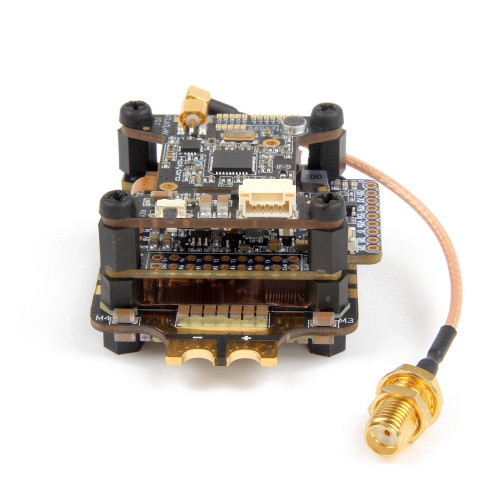Product Overview
A Holybro Telemetry Radio is a small, light and inexpensive open source radio platform that typically allows ranges of better than 300m “out of the box” (the range can be extended to several kilometers with the use of a patch antenna on the ground). The radio uses open source firmware which has been specially designed to work well with MAVLink packets and to be integrated with the Mission Planner, Copter, Rover, and Plane.
The radios can be either 915Mhz or 433Mhz and you should purchase the model which is appropriate for your country/region.
Features
- Interchangeable air and ground modules 915 or 433 MHz
- Micro-USB port
- 4-position JST-GH connector
Specifications
Processing
- 500 mW maximum output power (adjustable) -117 dBm receive sensitivity
- Open-source SIK firmware
- RP-SMA connector
- 2-way full-duplex communication through adaptive TDM UART interface
- Transparent serial link
- MAVLink protocol framing
- Frequency Hopping Spread Spectrum (FHSS) Configurable duty cycle
- Error correction corrects up to 25% of bit errors Open-source SIK firmware
- Configurable through Mission Planner & APM Planner
- FT230X is a USB to BASIC UART IC
Dimensions
- 26 x 53 x 10.7mm (without antenna)
Power
- Supply voltage: 5VDC (from USB or JST-GH)
- Transmit current: 500 mA at 27 dBm
- Receive current: 25 mA
- Serial interface: 3.3 V UART
Status LEDs
- The radios have 2 status LEDs, one red and one green. The meaning of the different LED states is:
- Green LED blinking - searching for another radio
- Green LED solid - link is established with another radio
- Red LED flashing - transmitting data
- Red LED solid - in firmware update mode
Connecting to Pixhawk4
Use the 4 pin JST-GH connector that should have come with the radio to connect the radio to your Pixhawk4’s “Telem 1” (“Telem 2” can also be used but the default recommendation is “Telem1”).
Connecting to a PC
Connecting the radio to your Windows PC is as simple as connecting the micro USB cable (which should have been included with the radio) to your PC. The necessary drivers should be installed automatically and the radio will appear as a new “USB Serial Port” in the Windows Device Manager under Ports (COM & LPT). The Mission Planner’s COM Port selection drop-down should also contain the same new COM port.
Includes
- radio modules with antennas *2
- Micro-USB cable *1
- Android OTG adapter cable *1
- GH 6P-GH 4P cable *1
- MLX 6P-GH 4P cable *1
- SMA Adapter *2










